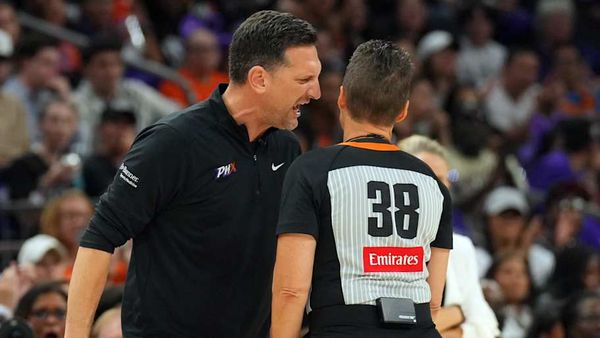The basic math of retirement savings no longer adds up for many people. And that's prompting calls for new strategies that go beyond "just saving more" to close the savings gap.
Rising costs for just about everything — housing, health care, college, child care and monthly basic expenses — over the past two decades eats up a bigger portion of worker incomes, according to Goldman Sachs Asset Management report titled, "New Economics of Retirement."
The cost of home ownership, for example, now totals 51% of after-tax income. That's up from 33% in 2000. Health care costs have risen from 10% to 16% of spending income. And child care now eats up 18% of posttax income, up from 12% in 2000, according to the Goldman Sachs report.
Retirement Savings Math Is Changing
Higher costs are pushing out the timing of life goals, like getting married, buying first homes and having kids, the report found. And the cost of retirement has outpaced inflation in the period from 2000 to 2023, Goldman notes.
The bottom line: There is less room in people's wallets today than 20 years ago, says Chris Ceder, senior retirement strategist in Goldman's asset management division.
"These large-ticket items and big competing priorities are taking a larger share of wallet, which is crowding out retirement savings," said Ceder.
Bracing For Life Events
Seven in 10 respondents who had a major life event (such as buying a home, sending a kid to college or getting married) in the past two years said it derailed their retirement plans. They were forced to either pause retirement contributions, take a loan from their 401(k) or delay retirement.
Retirement, the Goldman study concludes, is becoming less affordable for many people, especially workers who have little left over from their paycheck after paying the monthly bills.
As a result, 42% of younger workers (Gen Z, millennials and Gen X), say they're living paycheck to paycheck. And three of four say they're struggling to save for retirement. Goldman projects that 55% of workers will be living paycheck to paycheck by 2033 and 65% by 2043.
These troubling statistics prompted Goldman experts to pose the question: Does the retirement math still work?
No Money Left For Retirement Savings
Having little free cash available after payday makes it hard to contribute money to 401(k)s and IRAs.
So, what's the solution? Save more? That will help, of course, but it may not be enough to overcome what Goldman Sachs dubs the "financial vortex," says Ceder. "It seems very difficult in my mind to say that savings is going to be the only answer."
But there is hope. Goldman Sachs says new approaches can help tackle retirement affordability challenges. Access to a 401(k) plan and a steady approach to savings is key to moving the needle and improving retirement outcomes.
But the report lays out five new solutions that can improve retirement outcomes for savers of all ages. The more of these strategies you put in place the better the odds of closing the savings gap and improving retirement readiness.
New Retirement Blueprint
The new retirement-savings blueprint to consider contains several strategies.
First, take advantage of early savings accounts. This is a play for younger generations. Getting a jump-start on retirement savings at the earliest age possible is a step in the right direction. The so-called Trump Account for minors, which is part of the One Big Beautiful Bill Act passed in July, is a way to "kick-start" retirement savings, says Ceder.
Starting in 2026, the government will create investment accounts with tax-deferred growth potential for every U.S. baby born in 2025, 2026, 2027 and 2028. Uncle Sam will make a one-time $1,000 seed deposit for each eligible newborn to start the account. Annual contributions max out at $5,000 per year per child.
Starting Early Pays Off With Retirement Savings
Saving $500 a year at a 7% annual return rate from age 1 to age 20 in these accounts (which at age 18 automatically rollover to an IRA) amounts to an estimated 14% increase in final retirement savings compared to a saver who starts at age 21 and misses out on the early compounding, according to Goldman's analysis.
How costly is a late-start to retirement saving? Someone who starts saving 10 years later could take an estimated 38% hit to their retirement savings, Goldman estimates.
Consider Private Markets
Next, allocate money to private markets. Investing in assets beyond traditional stocks and bonds could be a good way to diversify retirement portfolios and boost returns over the long haul, according to Goldman's report.
In August, President Donald Trump signed an executive order that paves the way for the inclusion of alternative assets, such as investments in privately held companies and debt, in 401(k)s and other defined contribution plans.
These "alt" investments, which include many fast-growing companies that don't trade on public markets, have historically only been available to the wealthy and institutional investors, such as pension funds.
A modest allocation to a diversified basket of private-market investments can add an estimated 0.5% of excess annual return over the course of a saver's long-term glidepath, according to Goldman's report. And that higher return equates to a 14% boost to retirement savings by age 65, according to Goldman.
Earning just 1% less each year throughout one's saving years can reduce retirement savings by as much as 20%, according to the report.
Private equity and private debt are not do-it-yourself types of investments, says Greg Calnon, global co-head of public investing at Goldman Sachs Asset Management.
A 401(k) investor is best served by getting exposure to private allocations via a professional managed fund, such as a target-date fund or managed account, as part of a broader strategy, says Calnon.
Private Markets Have Downsides
A big difference between investing in a publicly traded stock and a private company is liquidity and ease of valuing the asset. The market value of a share of IBM is transparent and the stock can be sold in milliseconds. In contrast, a private equity investment is less liquid, meaning it could take longer to sell, just like a home takes time to sell and close.
"Having an institutional quality manager that's looking under the hood is critically important," said Calnon. "We believe private market investments should be part of defined-contribution plans, but only within professionally managed portfolios."
How big of an allocation makes sense? Private holdings should be no more than 15% to 20% of a total portfolio. How much is too much depends on one's risk tolerance and time horizon, says Calnon. A young investor with a long investing runway can go with a higher allocation, while a retiree or someone close to retirement is better off with a smaller holding, says Calnon.
Get Personal With Retirement Savings
Investing for retirement takes a personalized plan. Getting help from a financial advisor or investment pro can pay off, according to Goldman research. The retirement income savings versus income ratio improves for both workers still saving and those already retired. That means people have more set aside for their golden years as a percentage of their income.
And the retirement readiness also skews to the upside for those who had a personalized savings plan. For example, 83% of savers with a plan specific to their unique circumstances said they "are on track or better" versus just 41% without a plan, according to the Goldman report. Similarly, 67% of those with a personalized plan said they had increased their savings compared with just 35% without a plan.
More important, 85% of study respondents who got professional advice said they "feel able to reach retirement," versus only 37% without a plan.
"Having a plan makes a huge difference," said Nancy DeRusso, head of financial planning at Goldman Sachs Ayco, the investment firm's financial planning arm. It helps keep savers on track, and a key finding of the Goldman report was that there is a strong link between financial stability and retirement readiness.
Getting financial advice is good. "The problem isn't only getting bigger, it's getting more complex," said DeRusso. "A personalized plan can motivate people and help them understand the impacts of sacrificing immediate gratification for long-term success."
Consider Annuities
Integrating annuity solutions into a retirement income plan might make sense. A key pillar of financial security in retirement is having guaranteed income sources to cover, at a minimum, essential living expenses.
Integrating a single premium immediate annuity (SPIA) — a contract with an insurer where you pay them a lump sum in exchange for a guaranteed income stream in retirement — into an overall income plan is also a way to boost interest income, according to Goldman's study.
Goldman offers the following example on the dual benefits of "blending" a retail annuity with other income streams. You can generate more income from the same pool of savings.
The math works like this. Let's say you blend a 30% allocation to an SPIA that pays out 7.1% for life and withdraw the traditional 4% per year on the other 70% of your retirement investment portfolio. That combination of income boosts the annual income yield to 4.93%, which amounts to a 23% higher income than the classic 4% rule for retirement distributions, according to the report.
Goldman notes that it takes an investment of $563,000 in an SPIA to generate $40,000 of annual income. In contrast, you'd need a nest egg of $1 million to generate $40,000 using the 4% rule.
"The question is, can we take somebody from a 4% payout distribution to something higher, say 5%?" said Ceder. "Where do we build in more margin for error?"
Taking advantage of insurance-related investment options is one way to move the needle.
Don't Give Up On Retirement Savings
Demonstrate a high level of financial grit. There's a behavioral finance component to retirement readiness, the report notes. Perseverance, determination and commitment to saving for retirement and sticking to a plan are bullish for financial outcomes.
"Financial grit is something that we've been leaning into for the last several years," said Ceder. "Savers are at the center of this process. It's about one's willingness to be focused on long-term goals and have ambition to reach those goals."
Key factors in developing financial grit are perseverance, long-term focus, growth investing orientation, and optimism and residence, the report says.
"This is not about nudges, this is really about the mentality that people bring toward the retirement-planning process," said Ceder.
Don't underestimate the concept of financial grit. The Goldman report says it is the biggest factor in determining retirement success. In fact, those that display financial grit end up with an estimated 49% higher amount of retirement savings, according to the report.






